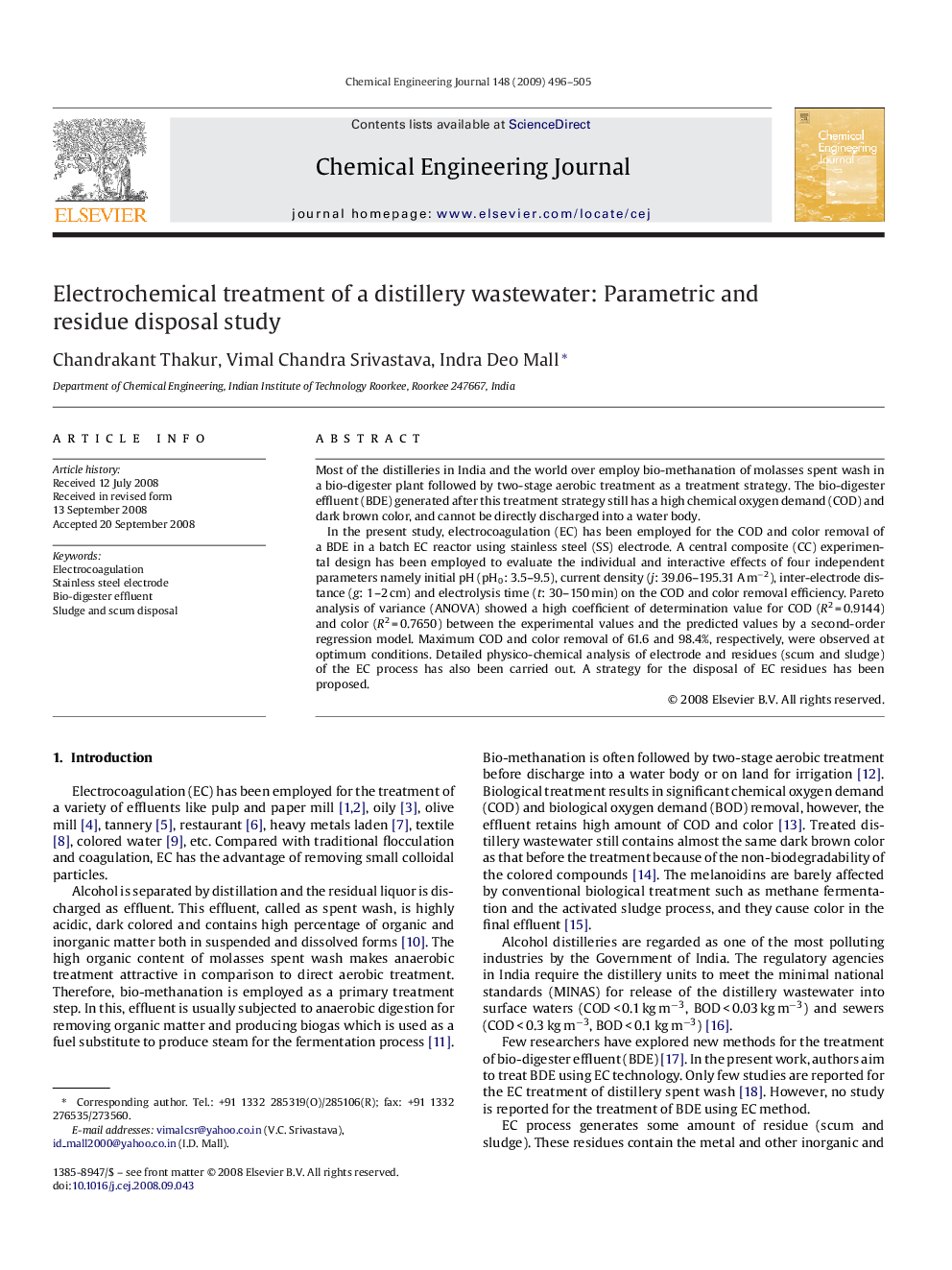| Article ID | Journal | Published Year | Pages | File Type |
|---|---|---|---|---|
| 152488 | Chemical Engineering Journal | 2009 | 10 Pages |
Most of the distilleries in India and the world over employ bio-methanation of molasses spent wash in a bio-digester plant followed by two-stage aerobic treatment as a treatment strategy. The bio-digester effluent (BDE) generated after this treatment strategy still has a high chemical oxygen demand (COD) and dark brown color, and cannot be directly discharged into a water body.In the present study, electrocoagulation (EC) has been employed for the COD and color removal of a BDE in a batch EC reactor using stainless steel (SS) electrode. A central composite (CC) experimental design has been employed to evaluate the individual and interactive effects of four independent parameters namely initial pH (pH0: 3.5–9.5), current density (j: 39.06–195.31 A m−2), inter-electrode distance (g: 1–2 cm) and electrolysis time (t: 30–150 min) on the COD and color removal efficiency. Pareto analysis of variance (ANOVA) showed a high coefficient of determination value for COD (R2 = 0.9144) and color (R2 = 0.7650) between the experimental values and the predicted values by a second-order regression model. Maximum COD and color removal of 61.6 and 98.4%, respectively, were observed at optimum conditions. Detailed physico-chemical analysis of electrode and residues (scum and sludge) of the EC process has also been carried out. A strategy for the disposal of EC residues has been proposed.
